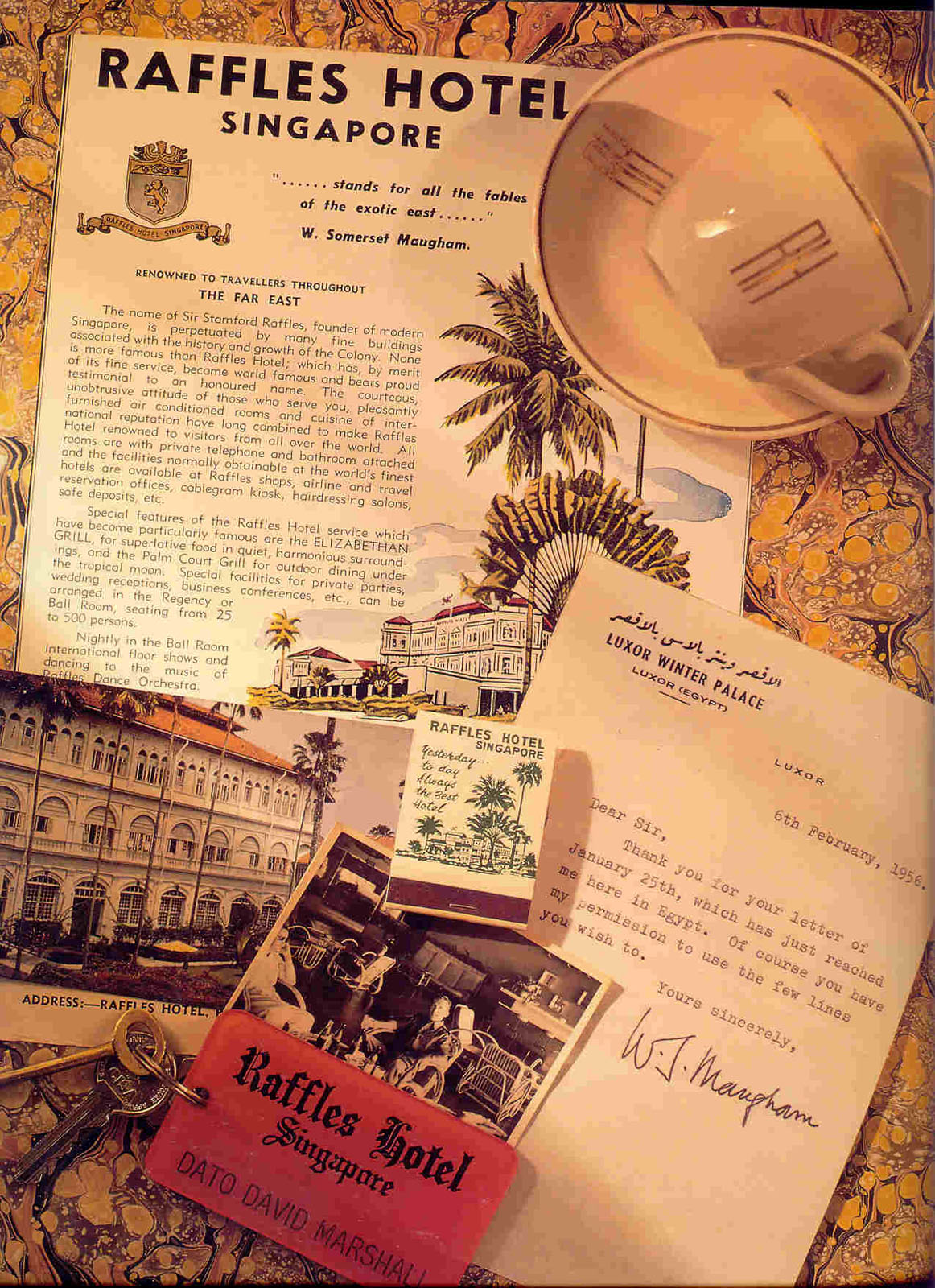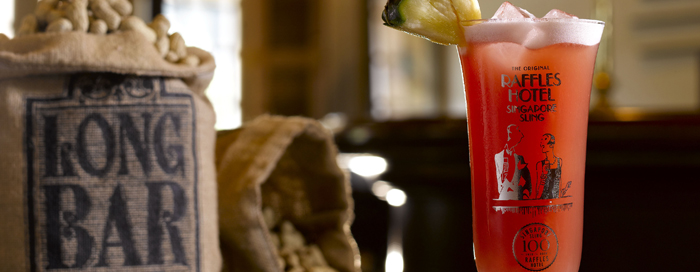Raffles Hotel is one of the remaining 19th century hotels in the world. It is also one of Singapore's national monuments.
And come Aug. 13, Raffles Hotel will be closed for major restoration works to be carried out. The "grand old dame" will only reopen to guests some time in 2018.
The building has witnessed 130 years of history, including Singapore's early colonial era, the Japanese Occupation, and Singapore's independence.
The story of Raffles Hotel began when it was established in 1887 by Armenian hoteliers, the Sarkies Brothers.
 Photo from the 1900s, from NAS
Photo from the 1900s, from NAS
By 1899, Raffles Hotel was the first hotel in Singapore to be powered by electricity, and had lights, ceiling fans, and call bells powered by the hotel's generators.
The electric lights in those days made the hotel a stunning sight at night. It is noted in the book Buildings of Empire, that Raffles Hotel "literally blaze[d] into the darkness of the night".
 Raffles Hotel at night. Photo from NAS
Raffles Hotel at night. Photo from NAS
Here are just some of the many captivating stories about the hotel:
Ghosts of guests past
Many of the hotel's stories revolve around anecdotes of famous people who have visited it.
One such famous person would be Somerset Maugham, a British writer who stayed at the same hotel suite on all of his three visits. He is also the man behind the famous quote: "Raffles stands for all the fables of the exotic East."
 Photo from Raffles Hotel
Photo from Raffles Hotel
Raffles Hotel was also a source of inspiration for British author and Nobel prize winner Rudyard Kipling. Kipling is famous for works such as The Jungle Book (1894).
Because his travels served as fodder for his writing, his trip to Singapore very likely influenced his works.
 Collage adapted from Getty Images and Wikipedia.
Collage adapted from Getty Images and Wikipedia.
[related_story]
In March 1889, Kipling arrived in Singapore. In his book From Sea To Sea, Kipling describes the hotel:
“Raffles Hotel...where the food is as excellent as the rooms are bad. Let the traveller take note: Feed at Raffles and sleep at the Hotel de L'Europe.”
Despite being full of praise for the food, Kipling had one complaint about the turtle steaks:
"I have eaten curries of the rarest at the Oriental at Penang, the turtle steaks of Raffles’s at Singapur still live in my regretful memory, and they gave me chicken liver and suck(l)ing-pig in the Victoria at Hong Kong which I will always extol."
Kipling has a suite named after him at the hotel. The room contains an original Kipling autograph.
Apart from Kipling and Maugham, other notable personalities that have stayed at the hotel include Charlie Chaplin, Michael Jackson and Queen Elizabeth II.
The tiger and the principal
 Photo from NAS
Photo from NAS
Back in 1902, a tiger from a travelling circus in Singapore escaped, found its way to the hotel, checked into it and hid in the billiards room.
Raffles Institution principal and sharpshooter Charles Philips was called on to help, even though he was still tipsy after attending the the governor's ball.
Philips, who was in his pyjamas, missed the tiger with the first three shots he fired. Feeling embarrassed, he composed himself well enough to catch sight of the tiger's gleaming eyes in the dark and finally shot it in the head, killing it.
The Singapore Sling story
 Photo from Raffles Hotel
Photo from Raffles Hotel
The Singapore Sling is a world-renowned cocktail made famous because it is believed to have been created at Raffles Hotel (some people question the exact recipe and the origins of the drink these days, but we'll explore that another time).
The widely told story goes that it was invented by Hainanese bartender Ngiam Tong Boon, at the hotel bar in 1915.
Here's the hotel's account of the Singapore Sling story:
"Raffles Singapore was the gathering place for the community and Long Bar was the watering hole. It was common to see the gentlemen nursing glasses of gin or whisky. Unfortunately for the ladies, etiquette dictated they could not consume alcohol in public, and for the sake of public modesty, fruit juices and teas were their preferred beverage.
The talented Ngiam thus saw a niche in the market and decided to create a cocktail that looked like a fruit juice, but was actually infused with gin and other liqueurs. Masking it in pink gave it a feminine flair and together with the use of clear alcohol, he cleverly led people into thinking it was a socially acceptable punch for the ladies."
Intrigued by these anecdotes? Well, you can find out more.
A specially curated exhibition and tour will be conducted by a volunteer guide from the National Heritage Board (NHB) daily at the hotel before it closes on Aug. 13.
Here are some equally interesting but totally unrelated stories:
5 types of NDP-goers you’ll see on public transport
NS last time vs NS now, explained in GIFs
Top image from NAS.
1819 is a labour of love by Mothership.sg where we tell stories from Singapore’s history, heritage & culture. Follow us on Facebook, Instagram and Twitter!
[related_story]
If you like what you read, follow us on Facebook, Instagram, Twitter and Telegram to get the latest updates.